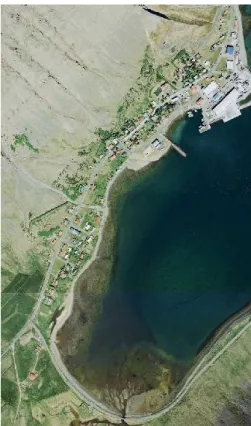1(4)
CHILDREN WAY OF TRAVELLING TO SCHOOL
IN TOWNS OUTSIDE THE CAPITAL AREA IN ICELAND.
DOES THE HIGHWAY AFFECT?
Erna Bára Hreinsdóttir
Project Leader at The Icelandic Road and Coastal Administration Engineer (BSc) and Planner (MS)
Hlíðarbraut 8, 220 Hafnarfjörður, Iceland Phone: + 354 8605617 E-mail: ebh@vegagerdin.is
Co-authors; Dr. Sigríður Kristjánsdóttir, Thr Agricultural University of Iceland, Programme director of Landscape Planning and Architecture and Dr. Ing. Haraldur Sigþórsson, Director of VHS Consultancy.
Keywords:
Traffic, speed, accident, public health, highway, traffic safety, development plans.
1. AIM
Over the last decades the car has become an increasingly bigger part of Icelanders lives. Sometimes Icelanders say that they use the private car instead of a coat. In modern planning some of the main goals are sustainability and public health. By using other means of travel than the private car, pollution will decrease and the need to rebuild traffic infrastructure is less likely. Active lifestyle also contributes to health. The government as well as many local authorities motivate citizens for a healthier lifestyle, for example by encouraging them to use an active mode of travel, such as walking or cycling. This should result in improved wellbeing and the costs of health care should be reduced. To implement active travel the focus is on children and how they get to school. In Reykjavík the public schools are often situated in the middle of the neighbourhood so children do not need to cross roads with heavy traffic on their way to school. Furthermore, children in Reykjavík usually do not have to travel over 800m for school. A study shows that 84% of school children in Reykjavík walk or cycle to school. But how is the situation in smaller towns in other parts of Iceland?
2(4)
2.
METHODS
A study was done in six towns in Iceland.
Figure 1. The six towns in Iceland for inspection
Based on residence within 800m from school, it turns out that the ratio in towns in rural areas is significantly lower than in Reykjavík, or 66%. The circumstances in the towns are different from in Reykjavík because of the highway crossing the residential areas. By law, any authorized vehicles is to be able to be driven through the highway. Therefore there is often heavy traffic on the highways.
3(4)
3.
RESULTS
The rate of active transport for the children who do not need to cross the road on their way to school is 77%, which is pretty close to the percentage in Reykjavík. Active mode of travelling by children that have to cross the road on their way to school is significantly lower; or 40%.
Figure 3. The rate of active transport for children travelling to school.
4.
CONCLUSION
The conclusion is that the location of the school and the highway affects the way children travel to school. These results are useful tools for municipalities preparing spatial plans. (Apply style Normal). To assure timely and efficient publication of the proceedings with a consistent and easily readable format, authors are requested to use this RS5C abstract template and submit in conformity with the guidelines herein.
5.
REFERENCES
Haraldur Sigþórsson, Rögnvaldur Jónsson, Stefán Einarsson, Valdimar Briem (2012). Núllsýn
umferðaröryggis á Íslandi. Sótt 20. 11. 2016 af vef Vegagerðarinnar:
http://www.vegagerdin.is/vefur2.nsf/Files/Nullsyn_umferdaroryggi/$file/N%C3%BAlls
%C3%BDn%20umfer%C3%B0ar%C3%B6ryggis%20%C3%A1%20%C3%8Dslandi.p
df
Íris Stefánsdóttir (2014). Ferðavenjur skólabarna í Reykjavík. Áhrif hins byggða umhverfis á
val ferðamáta. Óútgefin meistaraprófsritgerð, Landbúnaðarháskóli Íslands, Hvanneyri.
Kristinn Jón Eysteinsson (2016): Viðtal höfundar við Kristinn Jón Eysteinsson tækni- og
skipulagsfræðing hjá Reykjavíkurborg: 8. 11.
Lýðheilsustöð (2010). Virkni í skólastarfi. Sótt 8. 12. 2016 af
40% active transport77% active transport
800 m from school The highway
4(4)

